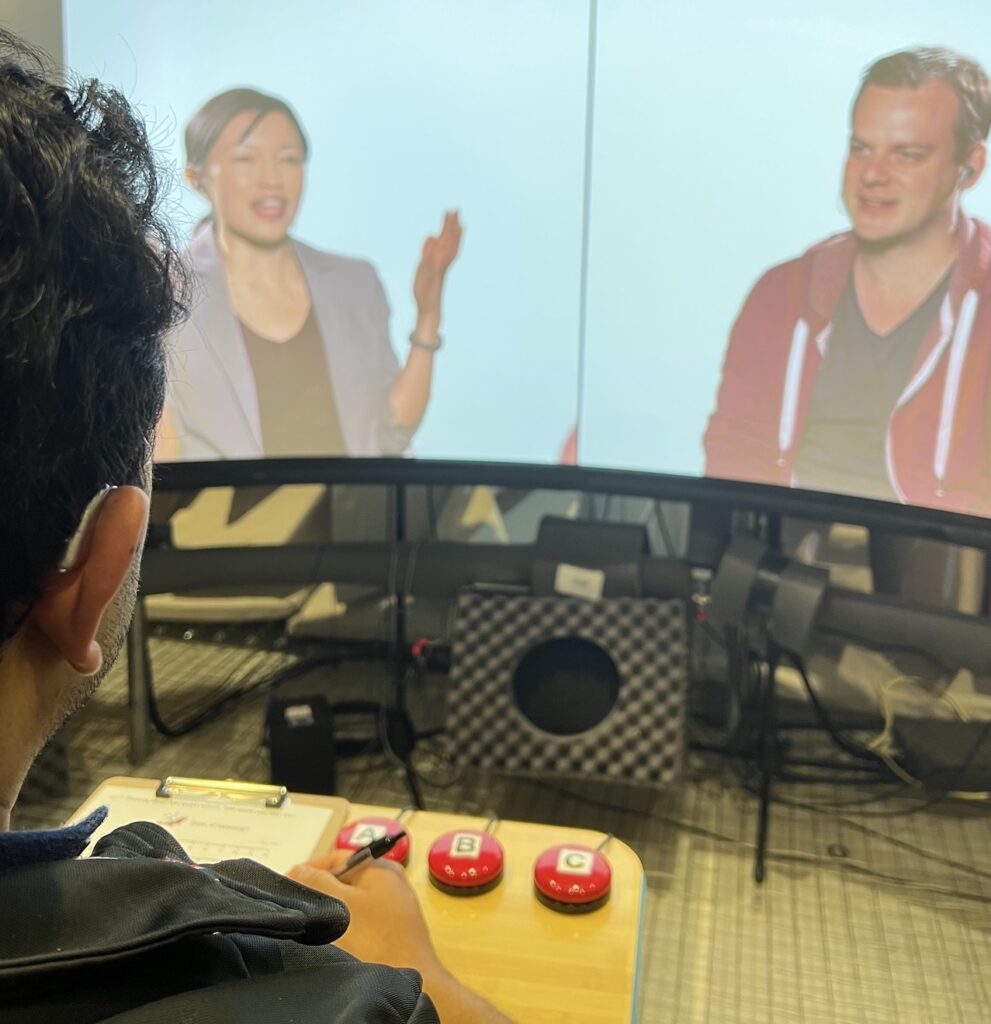Individualising the automation for directional microphones in Hearing Aids
Project Goals
The aim of this project was to predict when hearing aid users were most likely to prefer a directional microphone, ranging from omnidirectional to super directional, in realistic listening background noise conditions either when listening to a frontal talker or when no target talker was present. The specific goals of the research were to:
- Validate if previously determined acoustic markers could be used to predict individual preference for directional settings in several realistic listening conditions.
- Evaluate clinical feasibility of individual preference predictions from audiological data and questionaries
- Explore whether acoustic markers are systematically present in the absence of a target talker.
Results
Participants rated the three microphone conditions (omnidirectional, cardioid, and super-directional or binaural beamformer) in four realistic listening environments (library, office, cafe, and food). Data collected from 30 bilateral hearing aid users show a systematic change in preferences for different SNRs being presented. The results show:
- An individual region of preference for higher directionality being marked by two individual SNR values (the minimum relative level required between speech and noise to perceive speech material 50% of the time and the relative level between speech and noise that one can tolerate whilst listening to a target speech)
- Linear regression models can predict these SNR markers from conventional measures (e.g., audiogram data, questionnaires, and cognitive measures). These maskers can be combined with psychometric function models thus producing reasonable accurate predictions of individual preference for the directional microphone settings.
- Without a target talker, similar patterns in the preference scores on listening preference were observed as the background noise level changes. The region of preference for higher directionality was marked by the two distinct levels of background noises.
Contact David Meng at david.meng@nal.gov.au for more information


